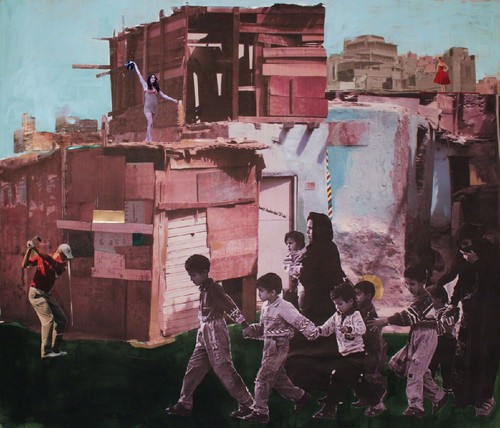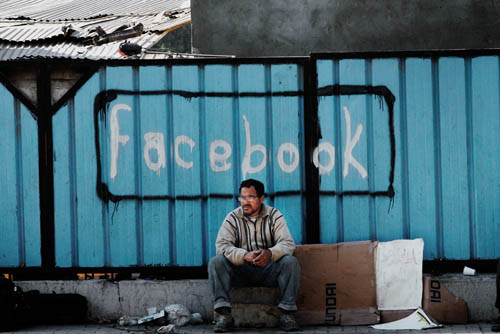"January in Cairo - III"
Publicado25 Jan 2012

(Menna Genedy, 'Egypt is the Land of Civilization’, 2011)
Countless languid women – abstract and figurative, sensual and monumental, modern and mythological – hang under the high-ceilings of a dustry building which resembles a recently deceased bank. This is Ibrahim Abd El-Rahman’s extensive collection of Egyptian paintings (I mentioned his gallery in my previous post on art in Cairo). Of these, perhaps the most striking are Ibrahim El Dessouki’selegant portraits (often of his wife, also a painter), which tempt comparison with Modigliani and Klimt. This collection of female forms – abstract and figurative, sensual and monumental – suggest certain trends in Egyptian painting and the nature of its buyers.
At Art Corner, a newish gallery in a Zamalek shop, two ink drawings lean casually against a wall. These are, I am told, the work of a French artist Paul Beanti, who came to paint the revolution and was arrested in Tahrir Square. The drawings give his account of arrest, attempted humiliation, striking back with satirical anger. The woman watching the gallery absent-mindedly whilst stringing a set of glass beads, goes to fetch one of Beanti’s paintings from the storeroom. When she returns, and the painting is removed from its bubblewrap, the exposed painting strikes me more than any of the other artists’ paintings on the walls: a composition in bright swathes of roughly applied orange, purple and yellow, the head of a sphinx emerges from within a haze of what looks like marker pen. The artist used sand and soil to give his work its roughness. The work made during his stay suggests he viewed his role as a foreign artist in residence in Cairo as that of agent provocateur (an interview in al-Ahram dutifully mentions that the artist’s main fascination – in his own [admittedly circumcised] genitalia – makes his work unacceptable in Egypt). These paintings look naked, aggressively so, insistently naïve. I wonder what art this revolution really needs.
Para ler o artigo completo de Orlando Reade, basta navegar até aqui.

